Quintessa
by
K.L. Sullivan
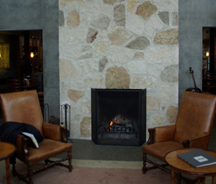 The first view of Quintessa’s winery is a very long white and tan stonewall set off in the distance. This wall seems to say: here we are blended into the landscape. Quintessa not only blends into the environment, it also blends its wines.
The first view of Quintessa’s winery is a very long white and tan stonewall set off in the distance. This wall seems to say: here we are blended into the landscape. Quintessa not only blends into the environment, it also blends its wines.
As we entered the winery, we felt the warmth of a fireplace. The day was cool and the working fireplace was perfect. We were quickly escorted to a small tasting room where several tables were set. Two wines were poured and we entered into a discussion of Quintessa’s winemaking. All too soon it was time to begin our tour.
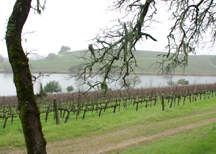 Despite the rain, we elected to brave the elements and begin the tour outside. Walking up a steep slope behind the winery, we walked under a canopy of large trees. Coming to a stop we gazed out over one of two bodies of water on the property of Quintessa. Our informative tour guide gave us a thorough description of the viniculture by Quintessa including the four microclimates in the immediate area and biodynamics.
Despite the rain, we elected to brave the elements and begin the tour outside. Walking up a steep slope behind the winery, we walked under a canopy of large trees. Coming to a stop we gazed out over one of two bodies of water on the property of Quintessa. Our informative tour guide gave us a thorough description of the viniculture by Quintessa including the four microclimates in the immediate area and biodynamics.
We were not familiar with biodynamics and it was explained that biodynamics includes the knowledge about the tides and phases of the moon in order to know when the best time is to plant and prune the grapes. Biodynamics also influences the type of fertilizing done and pest control. It is evident that the owners of Quintessa are concerned with not harming the good soil they started with in their vineyard. Cover crops are also used in the vineyard. Owl houses are used to encourage predatory birds.
At Quintessa, sustainable farming has always been a key component of the vineyard because prior to the start of Quintessa, grapes had not previously been grown on this property. This led to the introduction of biodynamics. The success of biodynamics in several locations in the vineyard prompted the owners to establish biodynamic techniques throughout the vineyards.
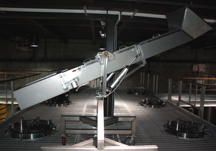 Quintessa uses a gravity flow system. The grapes are sorted and dropped down a chute. The skin of the grape breaks from hitting the bottom of the chute and the grapes on top crush with their weight. Many wineries feel this is the best way to get a high quality wine.
Quintessa uses a gravity flow system. The grapes are sorted and dropped down a chute. The skin of the grape breaks from hitting the bottom of the chute and the grapes on top crush with their weight. Many wineries feel this is the best way to get a high quality wine.
Quintessa strives to produce one spectacular wine each year. Only twenty percent of the grapes produced in Quintessa’s vineyards are used. These grapes are chosen for their quality. Only the best grapes are kept for the production of their fine wines. The grapes not selected are sold to other wineries. Producing a quality wine is a high priority for Quintessa.
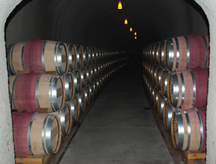 On the tour we saw large oak tanks used for the fermentation of the wine. Near the end of the tour we followed our tour guide into the caves. The caves cover about 1700 square feet. A fountain is positioned in the entrance of the cave to help the humidity to stay high. Humidity is a major factor in the aging of wine in oak barrels. A high humidity helps to keep the oak barrels from drying out and to reduce the wine evaporating from the oak barrels. The wine is put into these oak barrels to age.
On the tour we saw large oak tanks used for the fermentation of the wine. Near the end of the tour we followed our tour guide into the caves. The caves cover about 1700 square feet. A fountain is positioned in the entrance of the cave to help the humidity to stay high. Humidity is a major factor in the aging of wine in oak barrels. A high humidity helps to keep the oak barrels from drying out and to reduce the wine evaporating from the oak barrels. The wine is put into these oak barrels to age.
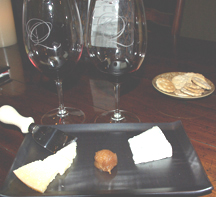 Our tour ended in a room off the tasting room that was set for the members of our group. In the tasting room we were invited to try a 2002 and a 2003. Quintessa makes a red blend from the grapes grown on their property. These red wines were served with cheese. As those familiar with wines know, wines are best served with food. The cheese highlighted the flavors of the wine. The setting in this room was quaint and was a great finish to the tour. The people on the tour had the opportunity to socialize and talk about the wines they were tasting.
Our tour ended in a room off the tasting room that was set for the members of our group. In the tasting room we were invited to try a 2002 and a 2003. Quintessa makes a red blend from the grapes grown on their property. These red wines were served with cheese. As those familiar with wines know, wines are best served with food. The cheese highlighted the flavors of the wine. The setting in this room was quaint and was a great finish to the tour. The people on the tour had the opportunity to socialize and talk about the wines they were tasting.
If you are interested in visiting a winery using biodynamics, Quintessa would be a good winery to visit. Quintessa is an environmentally-friendly winery. Call to make an appointment. The cost is $25 per person.
Quintessa
P.O. Box 505
1601 Silverado Trail
Rutherford, CA 94573
Phone 707 967-1601
Visit these California organizations and wineries that partner with Wine Trail Traveler.
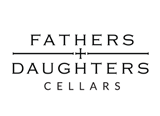 |
|||


